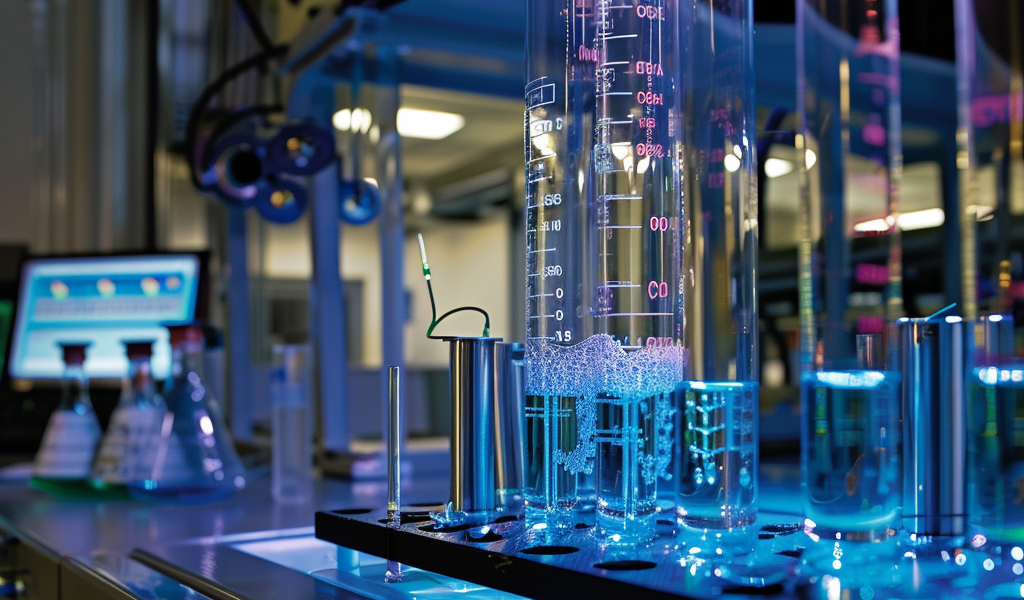CHAMPAIGN, Ill. — A groundbreaking study conducted at the University of Illinois has unveiled a novel approach to enhancing carbon dioxide (CO2) recycling by harnessing the power of visible light. This innovative research not only boosts the efficiency of converting CO2 into useful products but also reveals significant advancements in chemical selectivity, an essential factor in catalysis and chemical manufacturing.
Researchers have focused on a process known as electrochemical reduction, which involves the transformation of CO2 gas into valuable hydrocarbons. Traditionally, this process has faced challenges, particularly due to its sluggish nature and the extensive use of costly catalyst materials like gold or copper. Professor Prashant Jain, a chemistry expert at the University of Illinois Urbana-Champaign, noted that the lab has been actively seeking methods to expedite this process, thereby reducing the amount of catalyst required and enhancing its feasibility for the alternative fuels sector.
The study, led by Jain alongside former graduate student Francis Alcorn, has been published in the Proceedings of the National Academy of Sciences. It details a pioneering technique that integrates visible light with electrodes that are coated in nanoparticles of a gold-copper alloy. This combination significantly accelerates the CO2 reduction process, allowing for a more controlled selectivity compared to existing methods.
According to Jain, the newly developed electrodes function akin to tiny antennas, effectively capturing photons in the visible light spectrum and channeling them into the chemical reaction pathway. In practical terms, the electrodes are submerged in a solution containing CO2, water, and an electrolyte to improve conductivity. When a voltage is applied across the electrodes while they are illuminated by a visible light laser, a rapid chemical reaction occurs, yielding carbon monoxide from the breakdown of CO2 and hydrogen from the dissociation of water molecules.
The research team expressed their excitement upon observing a significant increase in productivity when visible light was employed. However, what took them by surprise was the extent to which visible light influenced chemical selectivity—an important advancement that could have far-reaching implications in the field of catalysis.
In catalysis, chemical selectivity refers to the ability of a chemical reaction to favor the formation of a particular product over others. This characteristic is crucial for maximizing efficiency and minimizing waste in chemical processes. The findings from this study could pave the way for more efficient and sustainable methods of CO2 conversion, ultimately contributing to the development of alternative fuels and reducing greenhouse gas emissions.
As the world grapples with the challenges posed by climate change and the urgent need for sustainable energy solutions, this research represents a promising step forward. By optimizing the conversion of CO2 into valuable products through innovative techniques, scientists are not only addressing environmental concerns but also exploring new avenues for chemical manufacturing.
Looking ahead, the implications of this research extend beyond just CO2 recycling. The insights gained from enhancing selectivity and efficiency in electrochemical processes could influence a wide range of applications within catalysis research, potentially leading to breakthroughs in various chemical reactions.
This study exemplifies the intersection of fundamental research and practical application, showcasing the potential of integrating visible light into chemical processes. As further research is conducted in this area, the hope is that such advancements will contribute to a more sustainable future, where CO2 is not merely a waste product but a valuable resource for creating new materials and fuels.
In summary, the University of Illinois research team has made significant strides in the field of CO2 recycling by leveraging visible light to enhance both the efficiency and selectivity of the electrochemical reduction process. This innovative approach could transform the way we think about carbon emissions and their potential for reuse in the production of valuable hydrocarbons.





